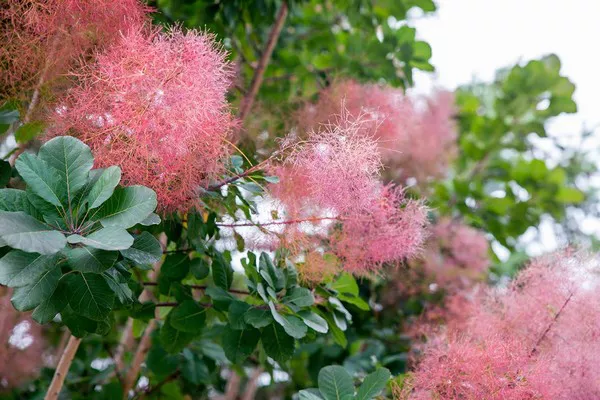Edible flowers add a delightful touch of color, flavor, and elegance to culinary creations, making them a popular choice for garnishing dishes, desserts, and beverages. However, understanding the lifespan of edible flowers is essential for ensuring their freshness and quality in culinary applications. In this article, we will delve into the factors that influence the longevity of edible flowers, exploring their storage methods, shelf life, and best practices for preserving their beauty and flavor.
Types of Edible Flowers
Edible flowers encompass a diverse array of blooms that vary in taste, texture, and appearance. Common edible flowers include pansies, nasturtiums, violets, roses, lavender, and calendula, among others. Each type of edible flower offers unique flavors ranging from sweet and floral to peppery or citrusy. Additionally, edible flowers come in a spectrum of vibrant colors, adding visual appeal to dishes and drinks. Understanding the characteristics of different edible flowers is essential for selecting the right varieties and maximizing their shelf life.
Harvesting Edible Flowers
The timing of harvesting plays a crucial role in determining the freshness and flavor of edible flowers. Ideally, edible flowers should be harvested in the morning when they are at their peak freshness and fragrance. Choose flowers that are fully open but not yet past their prime. Avoid harvesting flowers that show signs of wilting, discoloration, or pest damage. Use clean, sharp scissors or pruning shears to snip the flowers from the plant, taking care to handle them gently to prevent bruising or damage.
Storage Conditions for Edible Flowers
Proper storage is key to prolonging the lifespan of edible flowers and maintaining their freshness and flavor. After harvesting, gently rinse the flowers under cold water to remove any dirt, insects, or debris. Allow the flowers to air dry on a clean kitchen towel or paper towel, taking care not to crush or bruise them. Once dry, store the flowers in a single layer on a damp paper towel or cloth inside an airtight container. Place the container in the refrigerator to keep the flowers cool and hydrated until ready to use.
See Also: Why do flowers make us happy?
Shelf Life of Edible Flowers
The shelf life of edible flowers varies depending on factors such as the type of flower, storage conditions, and handling practices. On average, properly stored edible flowers can last anywhere from several days to a week or longer. Delicate flowers with high water content, such as pansies and violets, may have a shorter shelf life compared to sturdier varieties like calendula or lavender. It is essential to monitor the condition of edible flowers regularly and discard any that show signs of wilting or decay.
Best Practices for Preserving Edible Flowers
To extend the shelf life of edible flowers and preserve their freshness and flavor, follow these best practices:
1. Handle with Care: Handle edible flowers gently to avoid bruising or damaging delicate petals.
2. Keep Cool and Hydrated: Store edible flowers in the refrigerator to maintain freshness and prevent wilting. Keep them hydrated by placing them on a damp paper towel or cloth inside an airtight container.
3. Avoid Moisture: While it’s important to keep edible flowers hydrated, excessive moisture can lead to mold or bacterial growth. Ensure that the flowers are not in direct contact with water or condensation inside the container.
4. Check Regularly: Inspect the condition of edible flowers regularly and remove any that show signs of wilting, discoloration, or decay. Replace the damp paper towel or cloth if it becomes dry to maintain humidity.
5. Use Freshly Harvested Flowers: Whenever possible, harvest edible flowers just before use to ensure maximum freshness and flavor. Avoid storing flowers for extended periods as they may lose their vibrancy and aroma over time.
Culinary Uses of Edible Flowers
Edible flowers are prized for their versatility and ability to enhance a wide range of culinary creations. From salads and appetizers to main courses and desserts, edible flowers can be used to add visual interest, flavor, and texture to dishes. Use fresh edible flowers to garnish salads, soups, and fruit platters, or incorporate them into baked goods, desserts, and beverages. Experiment with different combinations of edible flowers to create stunning presentations and elevate the culinary experience.
Safety Considerations
While many flowers are edible and safe for consumption, it is essential to exercise caution and verify the edibility of each variety before using it in cooking. Some flowers may be toxic or cause allergic reactions in certain individuals. Always source edible flowers from reputable suppliers or grow them yourself using organic and pesticide-free practices. If you are unsure about the edibility of a particular flower, err on the side of caution and refrain from consuming it.
Conclusion
Edible flowers are a delightful addition to culinary creations, offering a burst of color, flavor, and elegance to dishes and drinks. By understanding the factors that influence the lifespan of edible flowers and implementing proper storage and handling practices, you can prolong their freshness and quality. Whether used as a garnish, infusion, or main ingredient, edible flowers add a touch of whimsy and sophistication to any culinary masterpiece. With careful selection, handling, and creativity, edible flowers can elevate your culinary creations to new heights of beauty and flavor.


